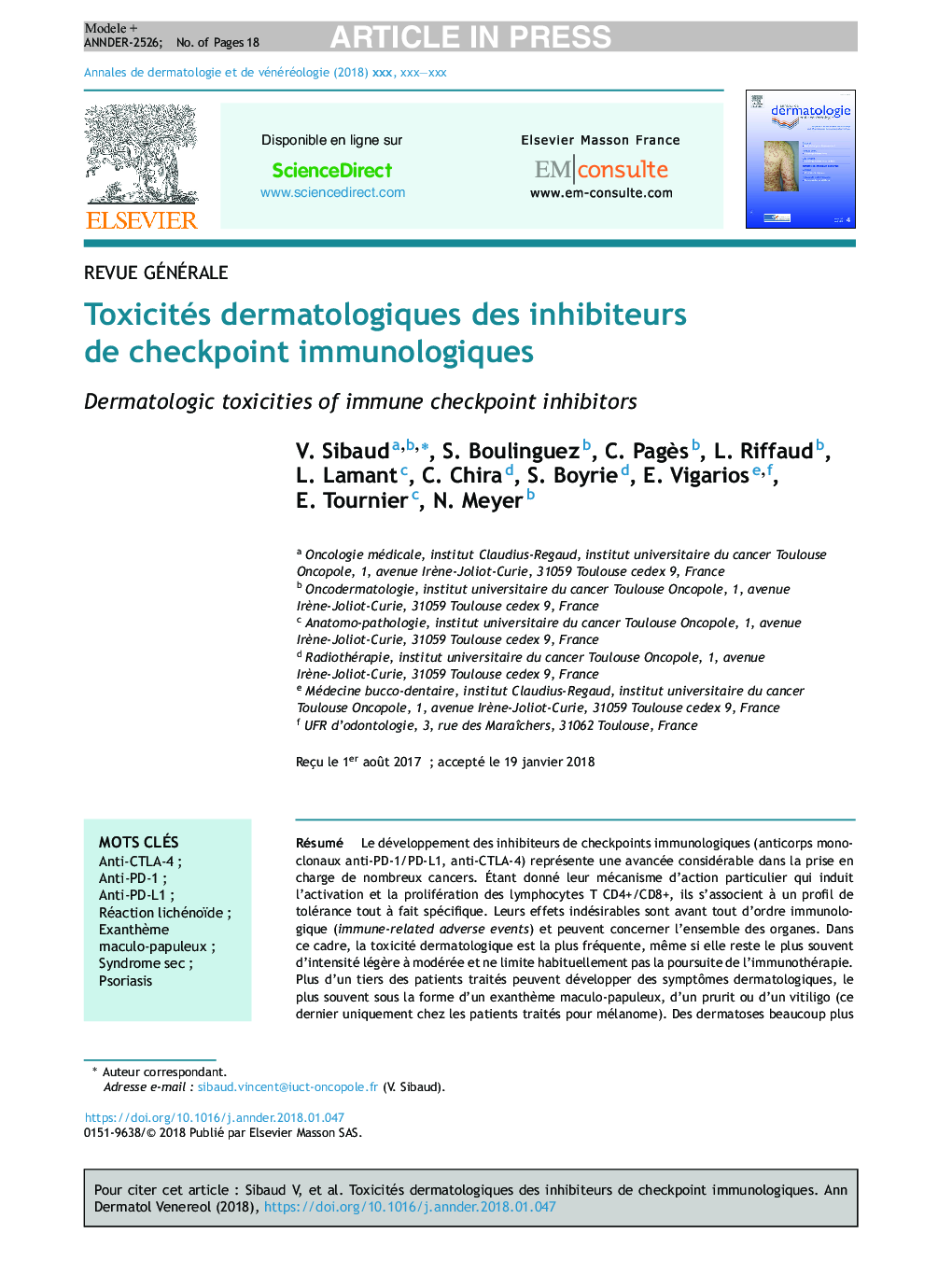| Article ID | Journal | Published Year | Pages | File Type |
|---|---|---|---|---|
| 8710912 | Annales de Dermatologie et de Vénéréologie | 2018 | 18 Pages |
Abstract
The development of immune checkpoint inhibitors (monoclonal antibodies targeting PD-1/PD-L1Â or CTLA-4) represents a significant advance in the treatment of multiple cancers. Given their particular mechanism of action, which involves triggering CD4+/CD8+ T-cell activation and proliferation, they are associated with a specific safety profile. Their adverse events are primarily immune-related, and can affect practically all organs. In this context, dermatological toxicity is the most common, though it mostly remains mild to moderate and does not require discontinuation of treatment. More than a third of patients are faced with cutaneous adverse events, usually in the form of a maculopapular rash, pruritus or vitiligo (only in patients treated for melanoma). Much more specific dermatologic disorders, however, may occur such as lichenoid reactions, induced psoriasis, sarcoidosis, auto-immune diseases (bullous pemphigoid, dermatomyositis, alopecia areata), acne-like rash, xerostomia, etc. Rigorous dermatological evaluation is thus mandatory in the case of atypical, persistent/recurrent or severe lesions. In this article, we review the incidence and spectrum of dermatologic adverse events reported with immune checkpoint inhibitors. Finally, a management algorithm is proposed.
Keywords
Related Topics
Health Sciences
Medicine and Dentistry
Dermatology
Authors
V. Sibaud, S. Boulinguez, C. Pagès, L. Riffaud, L. Lamant, C. Chira, S. Boyrie, E. Vigarios, E. Tournier, N. Meyer,
